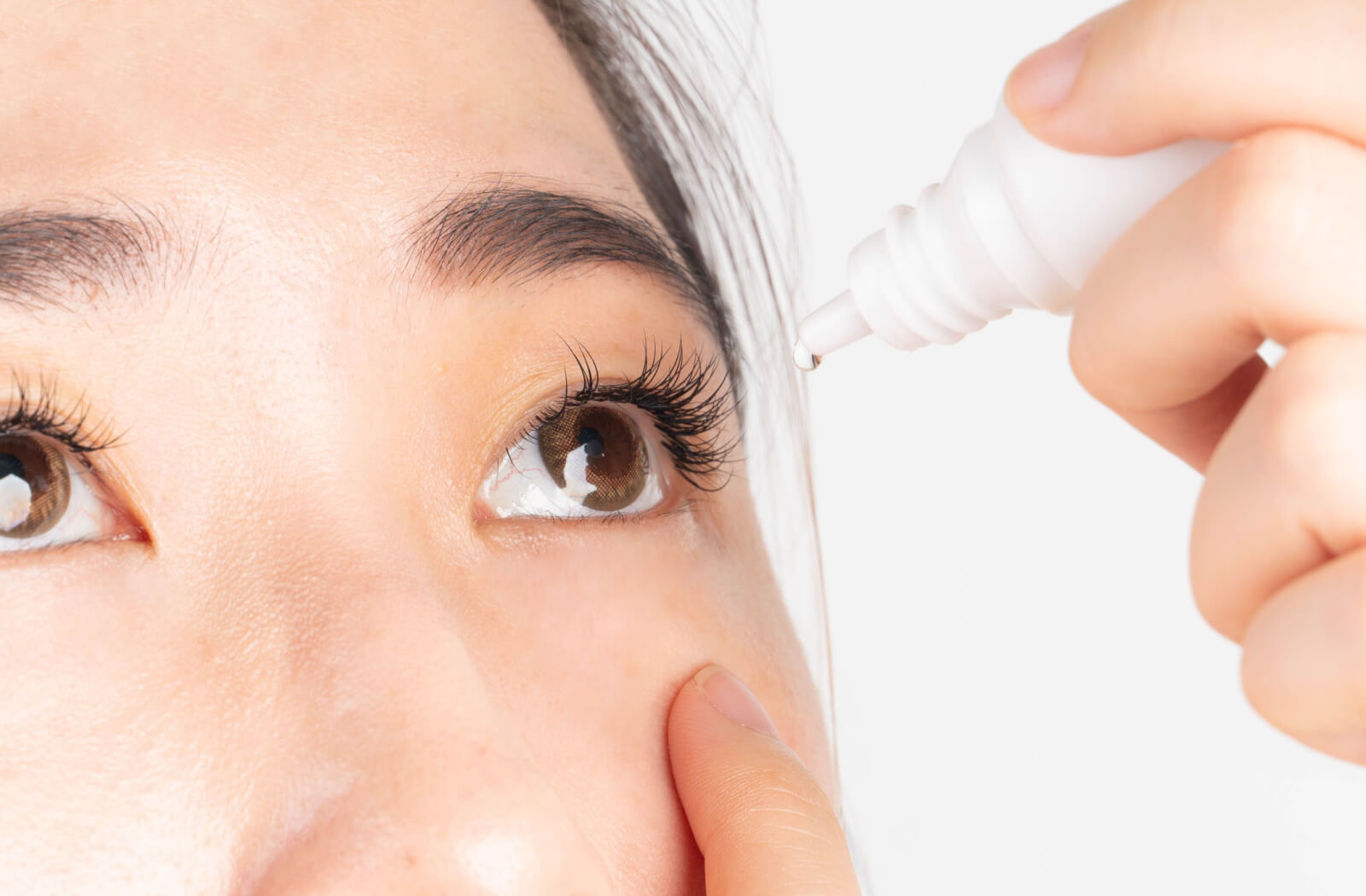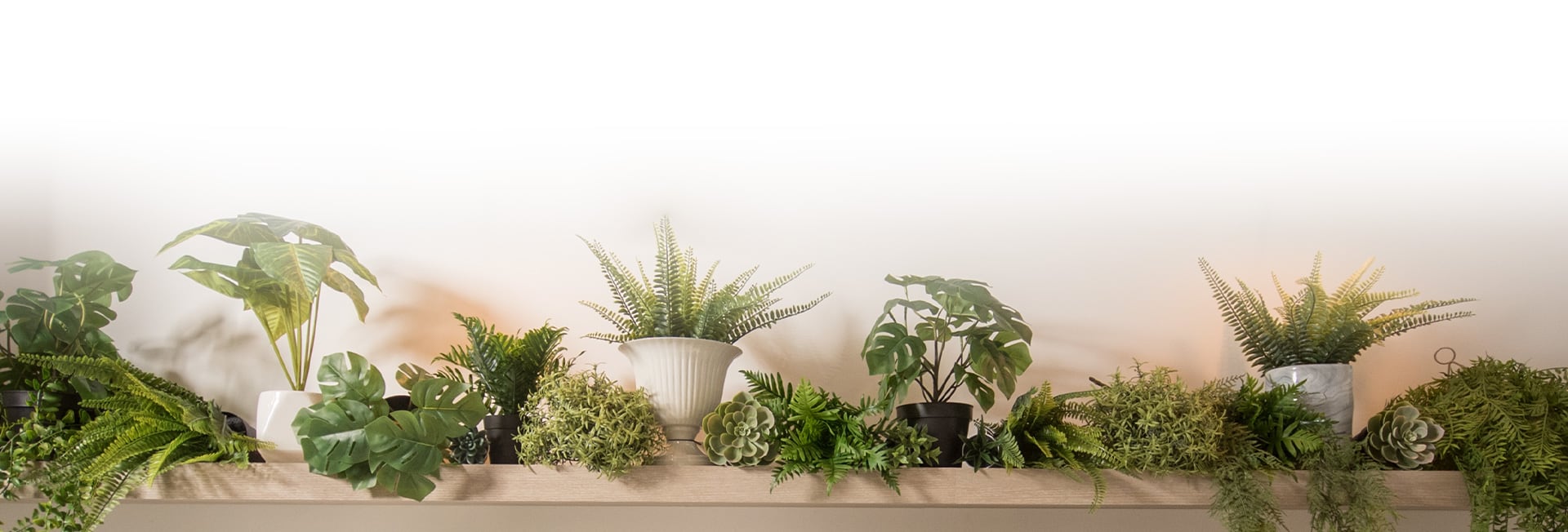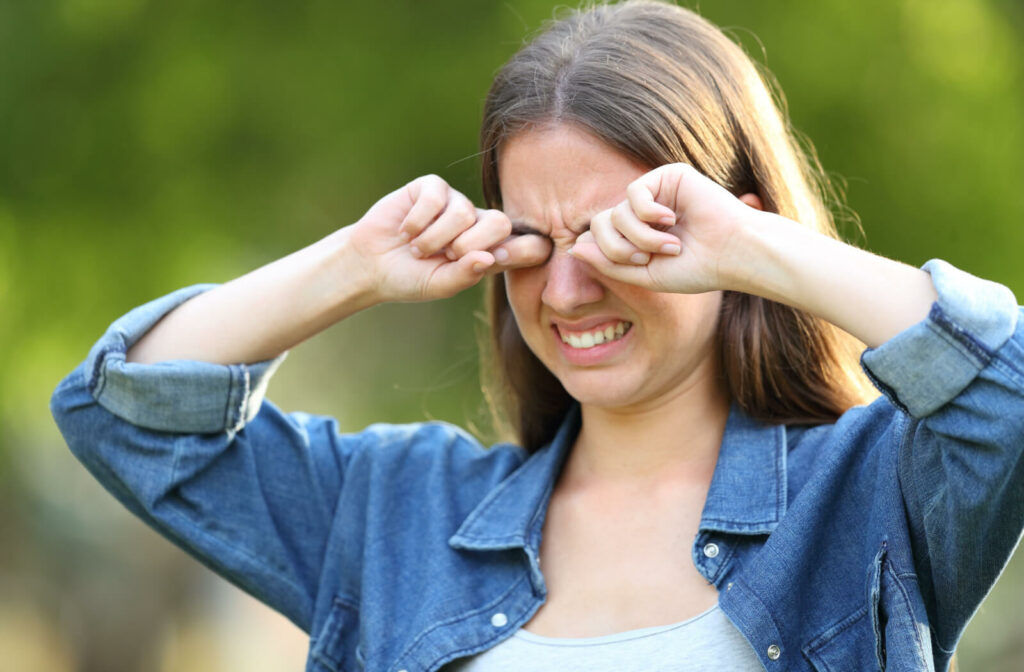Dry eye is an increasingly common condition affecting millions worldwide. It’s characterized by a persistent dryness in the eyes, often accompanied by a stinging or burning sensation, redness, and sometimes blurred vision. While treatable, dry eyes can significantly affect your quality of life.
Dry eye is caused by a dysfunction in the tear film, the protective, nourishing layer of tears on the surface of your eyes. But there’s also a link between dry eye and anxiety—recent studies have found a correlation between anxiety disorders and the development or worsening of dry eye.
What Is Dry Eye?
Every time you blink, your tear film is spread across the surface of your eye. Your eyes constantly produce tears to keep them protected and hydrated. But what happens if there’s a problem with your tears?
If a problem develops with your tear production, your eyes become vulnerable, unprotected from dust and debris, and don’t get the hydration they need to function properly.
A dysfunction in your tear film either occurs because your eyes can’t produce enough tears or your tears lack an ingredient they need to be effective. This dysfunction is called dry eye. This condition is chronic, meaning that even if it goes away, it’ll likely return.
Dry eye often causes symptoms like:
- Dry, itchy eyes
- A stinging or burning sensation in the eyes
- Redness
- Light sensitivity
- Blurred vision
- Eye fatigue or heaviness
In some situations, it can even cause your eyes to become overly watery—even though this might sound counterproductive. This symptom often develops if your tears are poor quality. The eye feels dry, so it flushes the area with new tears. But these new tears evaporate too quickly, leaving the eye vulnerable, and the cycle repeats.
What Causes Dry Eye?
The tear film is made of 3 layers:
- The oily layer, which coats the outside of the tear to prevent early evaporation
- The watery layer, which hydrates and protects the eye
- The mucous layer, which secures the tear to the eye and helps the tear spread across the surface
The oils in the oily layer are produced by the meibomian glands, which are located along the edges of your eyelids. When these tiny glands become blocked or malfunction, the oil production of your tears is severely restricted, leading to tears that evaporate far too quickly and leave your eye vulnerable. When this occurs, it’s called meibomian gland dysfunction or MGD.
MGD is the most common cause of dry eyes, but it is also caused by:
- Age, as your tear production naturally decreases as you get older
- An unbalanced diet
- Environmental factors, like dust, wind, or dry air
- Antihistamines, antidepressants, and some other common medications
- Medical conditions like diabetes, rheumatoid arthritis, or thyroid disorders
How Are Dry Eye & Anxiety Linked?
Anxiety induces a state of heightened stress in the body. It’s a kind of survival mechanism, but it can affect the body in surprising ways.
When you’re anxious, you may experience:
- Increased heart rate
- Rapid breathing or hyperventilation
- Restlessness, often leading to difficulty in sleeping
- Difficulty in concentrating or focusing
- Unexplained feelings of fear or dread
Along with these symptoms, anxiety can increase any existing inflammation you’re already feeling. And since your eyes are sensitive organs, they can be particularly vulnerable to these physical changes.
If you already have dry eyes, your body may overreact and enter this heightened, anxious state. So, dry eyes can trigger anxiety, and anxiety can worsen dry eye symptoms. This cycle makes it crucial to address both your anxiety and your dry eyes so you can reduce their effects on your life.

How Is Dry Eye Treated?
Dry eye is common and intrusive enough that various therapies and strategies exist to help improve quality of life. Treatments can include prescription or over-the-counter eye drops, warm compresses, vitamins and supplements, among others.
IPL for Dry Eye
Intense pulsed light (IPL) is a noninvasive treatment that uses light pulses and gentle massaging to address dry eye symptoms. It treats the underlying cause of MGD and provides long-lasting relief.
LLLT Treatment for Dry Eye
Low-level light therapy (LLLT) uses specific light wavelengths to target the areas near the eyes and reduce inflammation, stimulating cellular repair in the treated areas.
Lifestyle Changes
Mild dry eyes may be managed with simple lifestyle changes, including:
- Adding more eye-friendly foods to your diet
- Protecting your eyes from wind and dust
- Using over-the-counter artificial tears
- Maintaining a consistent sleep schedule to allow your eyes to rest
- Staying hydrated by drinking plenty of water
- Taking frequent screen breaks
Where to Get Help for Dry Eyes
At One Vision Eyecare, we’re passionate about eye health and are here to help. Our team of experienced optometrists can provide a comprehensive eye exam, diagnose your condition, and recommend an effective treatment option for you. Take the first step towards protecting your eye health, and book an appointment with us today.




